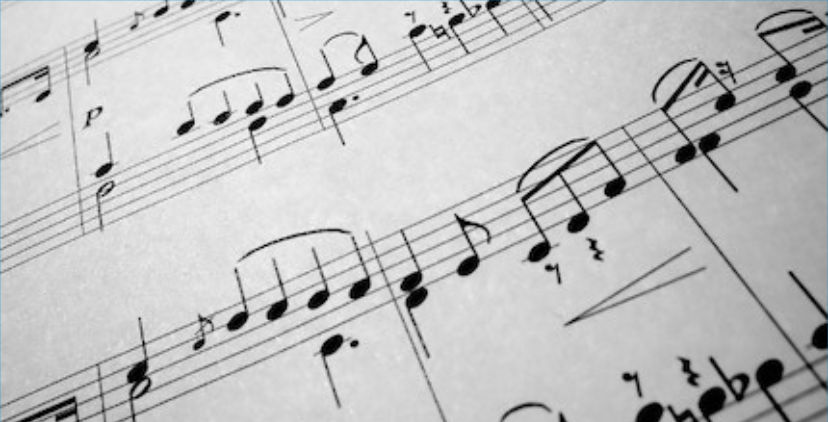Can’t you make a second voice? Would you like to know what “Tuesday” is (as they say in some circles)? Do you think singers (sertanejos for example) are born with this gift?
Well, the bad news for the pessimists out there is: if you study, you will be able to do a second voice. There is no such thing as “being born” knowing how to do the second voice.
What would it be like to sing a second voice?
In English, we usually say “ sing harmonies ” and this term strikes us as much more descriptive than its counterpart in Portuguese. That’s because a second voice will only work well if it’s following the harmony (chords) of that specific song.
In fact, it works almost like a harmonic counterpoint to the lead vocal. In simpler scenarios, a second voice follows more or less the same pattern as the main voice, but respecting – and making the necessary adaptations to – the harmonic accompaniment of the music.
Let’s consider here then the simplest possible scenario for a second voice: a lead voice sings a simple melody accompanied by simple chords; and we only intend to do a second voice above or below this main voice.
Imagine the melody of “Twinkle, Twinkle Little Star” in C Major.
The first phrase of this song has this sequence of notes:
C – C – G – G – A – A – G – F – F – E – E – D – D – C
And one of the possible harmonizations would be:
C G F C
Twinkle, twinkle little star,
F C G C
How I wonder what you are
There is a choice you must make when preparing a second voice: whether it will be above or below the main voice. The choice depends on a few factors:
1) The vocal range of the main melody;
2) Your vocal range as a second voice singer;
3) Of the harmony of music;
4) The arrangement you think of for that song.
About vocal extensions
The first two points are pretty straightforward. Analyze the extensions and see which option is neither too low nor too high for you.
On Harmonic and Arrangement Aspects
Regarding the third point, and as previously mentioned, the second voice has to make sense with the chords of the song. That is, it is not very common to have notes that do not belong to the chords happening in the second voice while that specific chord is played.
This mainly applies to the first and last notes of melodies referring to each chord. We often have passing notes (sometimes even in the lead voice) that stray from the chord they are being sung over. The function of these passing notes is exactly to bridge the gap between two notes belonging to the chord and thus make the melody more fluid.
For example: the first two notes in our example (where you sing Twinkle, twinkle) are C and C and the chord played when those two notes are sung is C Major. Then the second voice would be restricted to the other notes that make up this chord (E or G).
There is also another important point: in cases of only 2 voices (and again in simple scenarios), the second voice must privilege harmonic intervals of thirds or sixths. When it is not possible to use a third, it is replaced by a fourth and when it is not possible to use a sixth, it is replaced by a fifth.
That is, intervals classified as imperfect consonances are privileged . Avoid intervals like seconds or sevenths. Octaves and unisons are usually not even considered second voice (because they are the same note), they are considered doubles or reinforcements. Parallel fourths above or parallel fifths below or above are also not desired because despite having a little more harmonic information, they still act more as a reinforcement (as a curiosity, Gregorian chant in general develops with intervals of parallel fifths) than as a independent voice.
And what’s wrong with reinforcements?
Well, we’re past the point of talking about right and wrong in terms of musical choices, aren’t we? But, in fact, they end up impoverishing the arrangement because a voice is “lost”. It’s almost as if we don’t have a first and second voice. In the case of reinforcements, we have a first voice with an extra “little detail”.
In practice
Let’s consider a man singing the melody of “Twinkle, twinkle little star” starting on C2 (an octave below middle C) and also that another man intends to do the second voice.
Regarding the vocal range, we would discard the second voice option below because it would be too low.
If this second voice started on a third above the first note and continued in parallel thirds until the end of the phrase, we would have:
Mi – Mi – Si – Si – C – C – Si – Lá – Lá – Sol – Sol – F – F – Mi
With regard to harmony and arrangement almost everything stays inside too. The only two deviations we would have would be on the seventh note (Bb) on the antepenultimate and penultimate notes (the two Fs). If we do it like this, we would be adding a major seventh to the C chord (where “star” is sung) and a minor seventh to the G Major chord (where “what you” is sung).
In the case of Si, it would be better to replace it with the maintenance of the C note that had been sung before, it would look like this:
Mi – Mi – Si – Si – C – C – C – Lá – Lá – Sol – Sol – F – F – Mi
In the case of the two Fs, it is acceptable because it is a dominant chord that goes to the tonic and this F ends up resolving in E (we learned these concepts when we studied harmony – if you want, leave your doubts in the comments that we wrote in other posts) and also because it is a very simple song, with the appearance of traditional music; so a dominant with a seventh can be part of this universe.
At the same time, if we wanted to avoid that dominant seventh feeling, which gives the song a rather old and “classic” look, we could keep the G note that the second voice had been singing. In that case, it would look like this:
Mi – Mi – Si – Si – C – C – C – Lá – Lá – Sol – Sol – Sol – Sol – Mi
Thus, we would sacrifice a little the design of the second voice and introduce a fourth interval in the third and penultimate notes, but we would have a more modern look in our arrangement.
What if there were two women singing?
In this case, the main voice would start singing a C3 (central) and the second voice, if it were above, an E3, but we could follow exactly what we said in the previous paragraphs.
For reasons of vocal range here we could think of a second voice below the main one as well. In that case it would look like this:
G – G – D – D – F – F – E – C – C – C – C – B – B – G
In this example, we opted for a very simplified second voice (that followed the main voice as much as possible) making only a few adaptations. Note that we opted for fourths in most of the second voice line because lower thirds would add too many strange notes to the chords, but there was a time when we went back to thirds.
In a way, the arrangement with the lower second voice was a little poorer than the upper second voice because there were fewer moments of imperfect consonances . If we were a little more creative, we would have to give up the original design of the first voice to create more moments of Tuesdays and Fridays. An example:
C – C – B – B – C – C – E – C – C – C – C – B – B – C
This example would be more interestingly arranged, but perhaps a little more difficult to sing and memorize.
Female first voice and male second voice
In this case, perhaps the best option would be for the female voice to start on C3 (middle) and the second male voice to be below the main voice (starting either on E2 or C3). In this case, we can follow the same procedure as explained for the second female voice below.
First male voice and second female voice
Here, a high-pitched male could sing starting on C3 (middle) and the second female voice above, following what we said about the two female voices.
If the man were serious, the second female voice would still be above (starting on an E3), but they would be separated by an interval that we call the tenth (a third octave above). It’s not that common, but it works well.
How to study all these examples?
As you may have noticed, it’s interesting to have a little knowledge of theory, a little harmony and be able to play melodies and chords on an instrument (the best are piano and guitar).
Then come up with your second voice (you can use our examples as a starting point and, as an exercise, go to the end of the song) and sing it many (very many times) with the accompaniment of the chords (or playback) WITHOUT the first voice . You have to tune your second voice very well in the accompaniment and memorize it; as if that voice was the most important voice in the song. Only then go back to singing listening to the first voice.
If you don’t do this, what is very common with second voice beginners can happen, which is to end up falling into the first voice again. Or not being able to tune the second voice very well.
In this sense recording equipment can help you a lot to study, see our other post: https://www.raphaelbegosso.com/016-equipamentos-para-aulas-de-canto/
With the equipment you can record the first voice and sing and the second, you can hear yourself singing the second voice and if you still get confused playing and singing, you can record the piano or guitar and study just the singing. Even until you are very sure, you can keep the volume of the first very low, just in the background while singing the second voice.
Conclusion
Are there people who find it easy and do the second voice well without following these steps? Yes, but they are exceptions. And we can never be guided by exceptions when we start studying a subject, we have to go with what has already been tested and proven many times.





